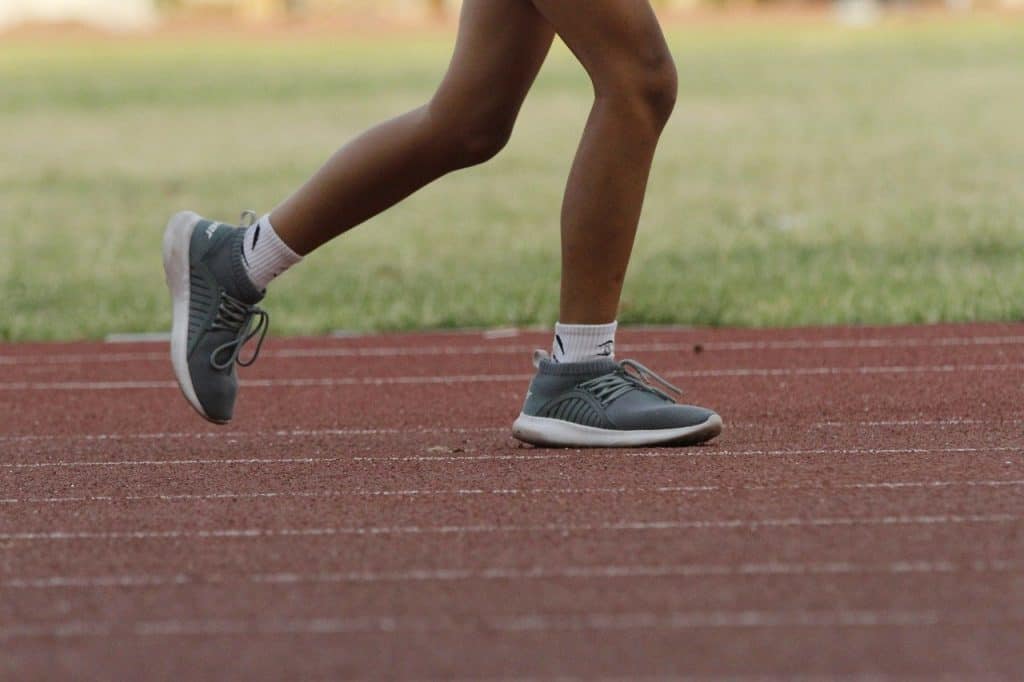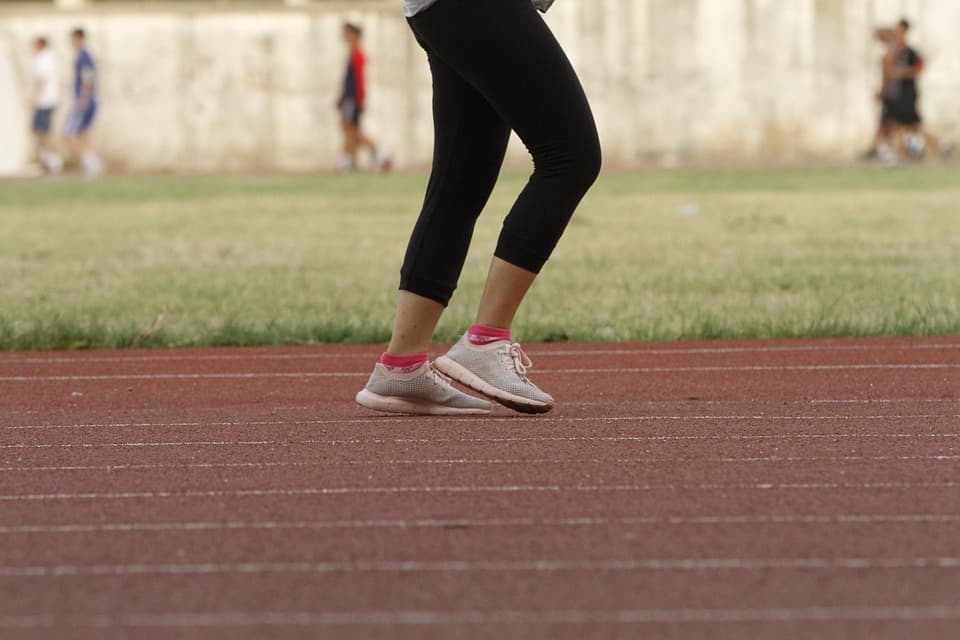Running makes your legs slim, increases muscle mass, and gets your body lean. But, does running make your legs bigger?
That’s where it gets a bit controversial.
Running isn’t supposed to make your legs bigger; endurance training and other leg exercises should. However, some people do grow bigger legs from running. So, what is it?

Here’s everything you need to know about the matter.
Does Running Make Your Legs Bigger?
Running is primarily a cardio exercise, and a cardio workout is known to get you slimmer. It doesn’t, however, have significant effects on your muscle mass. If you want to look bulkier, you’ll need to go for strength training, but that’s a story for another day.
So, to answer your question, running doesn’t make your legs bigger—or at least it’s not supposed to.
Despite that, some people grow bigger legs from running. Whether you’ll grow bigger legs from running depends on your genetics, the intensity of your running, and your body type. I’ll go into all the details later, but let’s first understand how your body grows muscles.
How Do Your Legs Get Bigger? The Science Behind It
To understand how running may or may not make your legs bigger, you need to understand the science behind it.
Let me make it simple for you. When you work out or start doing any form of training, you stress your muscles. Whether they’re your leg muscles, hamstring muscles, or quadriceps, you’re straining the muscle group. This straining motion causes the cells to develop micro-tears.
When you rest after training, your muscles start using the protein in your body to rebuild these tears and grow. So they don’t only grow stronger, but they also get bulkier over time if you’re consistent in working out.
Okay, now that we have that covered, where does running lie between all that? Here are the factors that cause it to make your legs bigger.
Does Running Make Your Legs Bigger? It Depends on These Factors
Some people grow bigger, bulkier legs when they run. Some people don’t, and it depends on these factors.
Intensity of Running
The intensity of your running may be the reason you’re not growing the muscles you want in your legs. If you haven’t noticed, marathon athletes are almost always lean and skinny. Meanwhile, professional sprinters will have muscular legs, and their bodies will be overall bulkier.
That’s because long-distance running, which is often what marathons are about, actually compromises muscle gain. When you run for a long time at a moderate speed, your body secretes cortisol, a stress hormone.

The hormone affects your body’s ability to build muscles, so running for long distances won’t do any good if you want to grow your muscle mass. That’s unless you accompany it with strength training.
On the other hand, sprinting has a totally different effect on your body. It engages more muscles and puts more stress on them. Sprinting keeps the glutes, hamstrings, calves, and quadriceps under immense pressure. So, people who sprint frequently will have much bulkier legs than those who don’t.
Body Type
People have different abilities to grow muscles. Some people get bulkier faster, even if they don’t try hard. Meanwhile, others have to make a lot of effort to see any sign of muscle growth. It depends on your body type.
There are three main body types: ectomorphs, endomorphs, and mesomorphs. Here’s a brief overview of each of them and how they affect muscle gain.
Ectomorphs
Ectomorphs have lean bodies and fast metabolisms. It’s pretty hard for them to gain muscles unless they take supplements, and they don’t gain fat quickly, either.
If you’re an ectomorph and you want to gain muscles, you’ll need to focus on high-intensity strength training. Plus, you may want to consult a dietary expert for supplements that can help you.
If you’re concerned about running, it won’t make your legs any bigger. It’ll only get them to be slimmer.
Mesomorphs
Mesomorphs are on the center of the scale between ectomorphs and endomorphs. This is because they can build muscles better than ectomorphs, and they can lose more fat than endomorphs. This makes their chances high of growing bulky muscles and getting lean bodies.
If mesomorphs develop a habit of running every day or at least three times weekly, they may notice their legs getting bulkier than they were. This is because their bodies build muscles quickly.
However, it’s worth mentioning that mesomorphs also lose muscles faster than the other two types. If you’re one of them, you’ll have to constantly up your training if you want to maintain your muscle mass.
Endomorphs
Endomorphs usually have stocky, wide bodies. They can grow muscles and gain fat just fine, but both will be concentrated in the body’s lower half.

Endomorphs have leverage over other body types because they can gain muscles quickly. However, it’s often hard for them to lose weight or get lean because their bodies store fats like they store muscles. Additionally, their metabolisms are relatively slow compared to the other two types. So, they often need to follow strict diets to lose weight.
If you’re an endomorph, you may want to focus on high-intensity training and high-impact exercises like running. For example, running may make your legs bigger if you accompany it with strength training. Generally, you should work all your muscle groups rather than focus on one area.
Muscle Fibers
Aside from the intensity of running and your body type, muscle fibers also play a role in growing bulkier legs from running.
There are two main types of muscle fibers in all our bodies. First, there are slow-twitch fibers, which work during resistance training because they keep you active for a long time. On the other side, there are fast-twitch fibers, which work during high-intensity workout and sprinting because they only keep you moving for a short period.
To make it simpler for you, slow-twitch fibers are for long training sessions, while fast-twitch fibers are for short, active bursts.
Not all people have the same amounts of both. That’s why some people are better than others at enduring strength training. Those who have more fast-twitch fibers will gain leg muscles much faster than others. Even if they don’t do much weight lifting, their legs will be bulkier from merely running.
On the other hand, people with more slow fibers will find it challenging to grow bulky legs, even if they sprint frequently or work their muscles.
Others
The muscle fibers you have and your body type are both determined by genetics. So, genetics get the lion’s share in deciding whether you’ll get bigger legs from running. After that, comes the type of running you choose and some other factors.
These other factors include your exercise history. If you’ve been exercising for a long time and you frequently take up strength training, you’ll have lower chances of growing muscles from running. The more muscles you grow, the more endurance training you need to develop more muscles. Running isn’t an endurance workout, so it won’t show you much difference.
On the other hand, if you seldom work out, and you start taking up running as a daily or a weekly habit, you have better chances of growing muscles.
Another factor is the surface you’re running on. If you run on slopes and inclines frequently, you’ll put more stress on your muscles and urge them to grow bigger. The glutes and quadriceps, in particular, will have better chances of growing.
Running Gear to Help You Grow Bigger Legs
If you want to grow bigger legs but you don’t want to go through strength training, some running gear may help. Running alone won’t make much difference, but you can up your game using this equipment.
They’ll work your muscles more, so running becomes closer to being an endurance workout.
Weighted Vests
Weight vests are suitable for growing muscles because they distribute the weight evenly on your body, so the resistance is naturally on your legs while running. In turn, this stresses on your leg muscles, helping them grow bigger.
It’s worth noting, though, that you need to make sure our body can handle weighted vests. In the end, they’re an added load to your total weight, so you need to have enough muscles to carry them. Otherwise, you’ll get fatigued faster than necessary.
You can also opt for lightweight vests, then gradually go up as your body gets used to them.
Resistance Bands
No one likes resistance bands; these fellas hurt real bad!
However, they do wonders when it comes to growing leg muscles. If you want to grow leg muscle while running, you can opt for stride resistance bands. You’ll keep them around your thighs while working out, and they’ll put more strain on the muscles in this area.
You won’t be able to run long distances using these bands, but that’s the right thing to do if you want to gain muscles. You can use them for short-distance sprinting, and you’ll notice a difference if you persist on them.
Ankle Weight
Ankle weight may help you get bigger legs from running and walking, but you need to use it right. Otherwise, you may get an overuse injury, and you may not see the results you want. Start by two pounds per ankle, and try some gentle exercises first.
Keep in mind that ankle weight may cause a muscle imbalance if you misuse it. It’s better to buy adjustable weights, so you can control the intensity of your training.
Exercises That’ll Make Your Legs Bigger
If you just found out that you’re an ectomorph or that gaining muscles through running may be too challenging for you, you can take up other exercises. A lot of endurance workouts will help you grow bigger legs, and they’ll show much faster results than running.
Leg Press
If you have leg day coming up in your gym schedule, you may want to take a couple of rounds on the leg press. It’s not the most comfortable, I’ll give you that, but it’ll give you a bulky look you’re aiming for.
Just make sure you’re using the leg press right. If you’re not, you may get yourself an unnecessary injury. Make sure your knees are forming a 90-degree angle, and keep your bottom flat against the seat.
Back Squats
Back squats are among the best exercises for leg strength. You can go for either tempo back squats, low bar squats, or high bar squats, and they’ll all work on your leg muscles. Both tempo and high bar squats target the quadriceps, and they allow for better knee flexion.
Front Squats
If you’ve already been training for a while, you may go for front squats. They’re harder than back squats, and they need more mobility, so they’re not recommended for beginners.
They’re excellent for growing leg muscles because they allow for deep knee flexion, and they involve the quads repeatedly, helping them grow and bulk out. They also don’t add much load on the glutes and hamstrings.
Stiff Leg Deadlift
If you’re aiming at bulky thighs, you may want to include stiff leg deadlifts in your daily workout schedule. They target the hamstrings, putting stress on the back of your thighs. The weight also targets your arms and shoulders, which is a bonus.
Stiff leg deadlifts are better than regular deadlifts because they don’t cause much fatigue. Additionally, they don’t apply much stress to your lower back, so you’re less prone to cramping injuries.

To Wrap Up
So, does running make your legs bigger?
It depends on your genetics—mainly your body type, its readiness to grow muscles, and your muscle fibers. It also depends on the kind of running you’re doing and what gear you use during it.
Generally, running isn’t the best exercise to choose when you’re trying to grow muscles. You’re better off going for squats and strength training.

